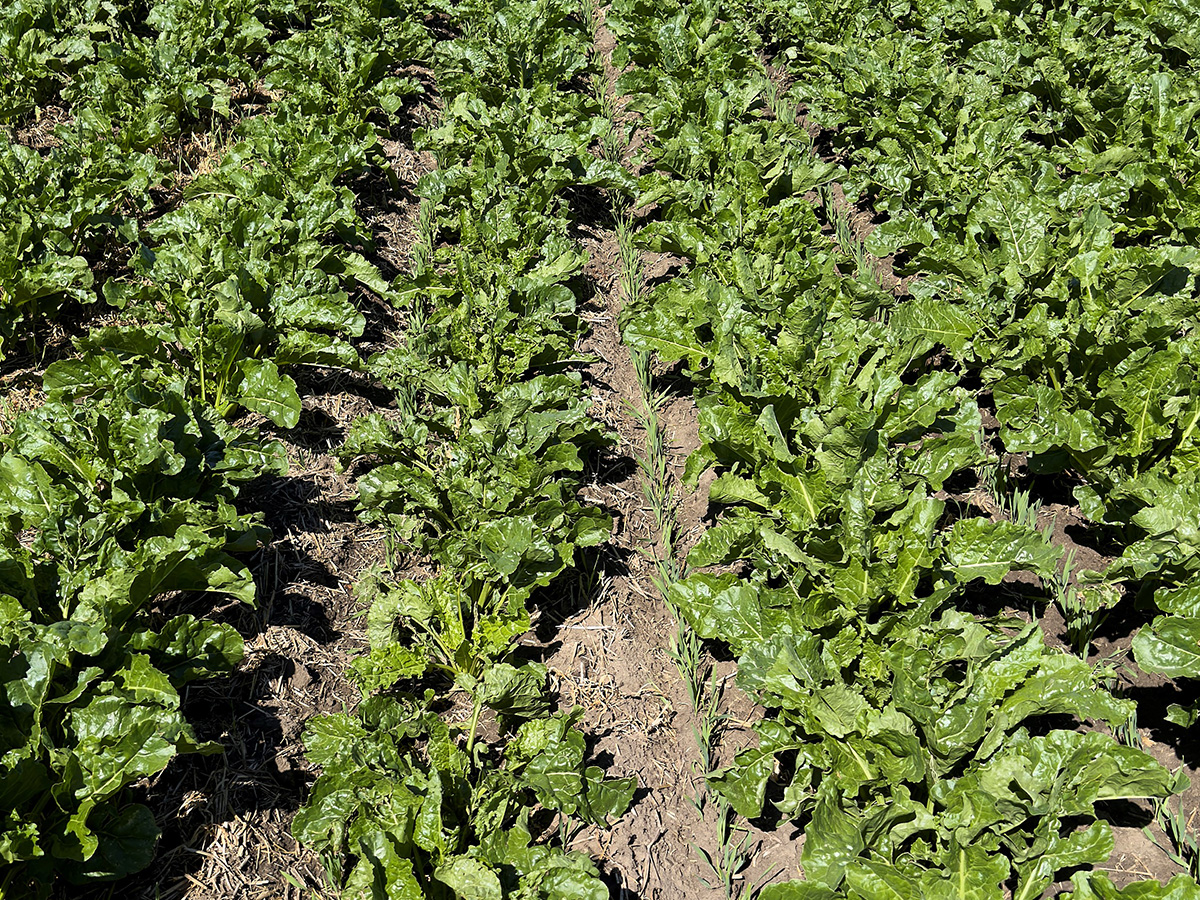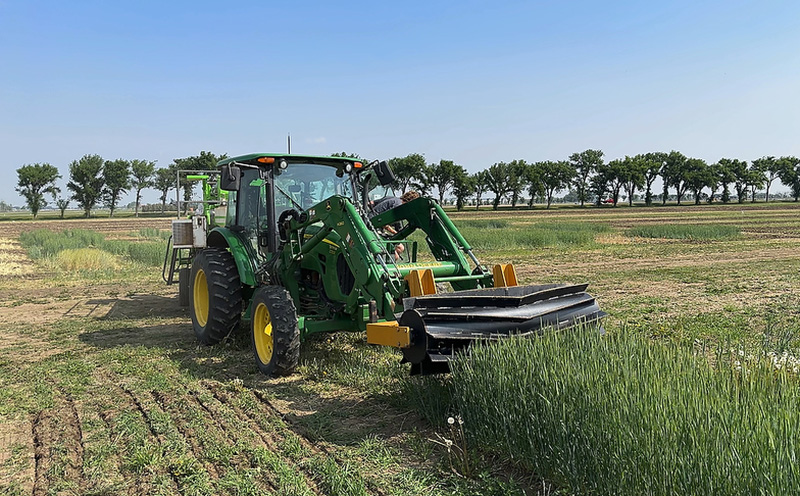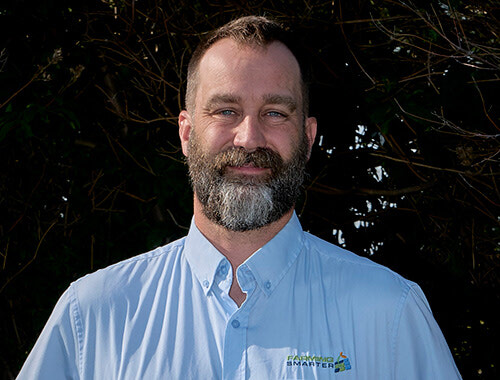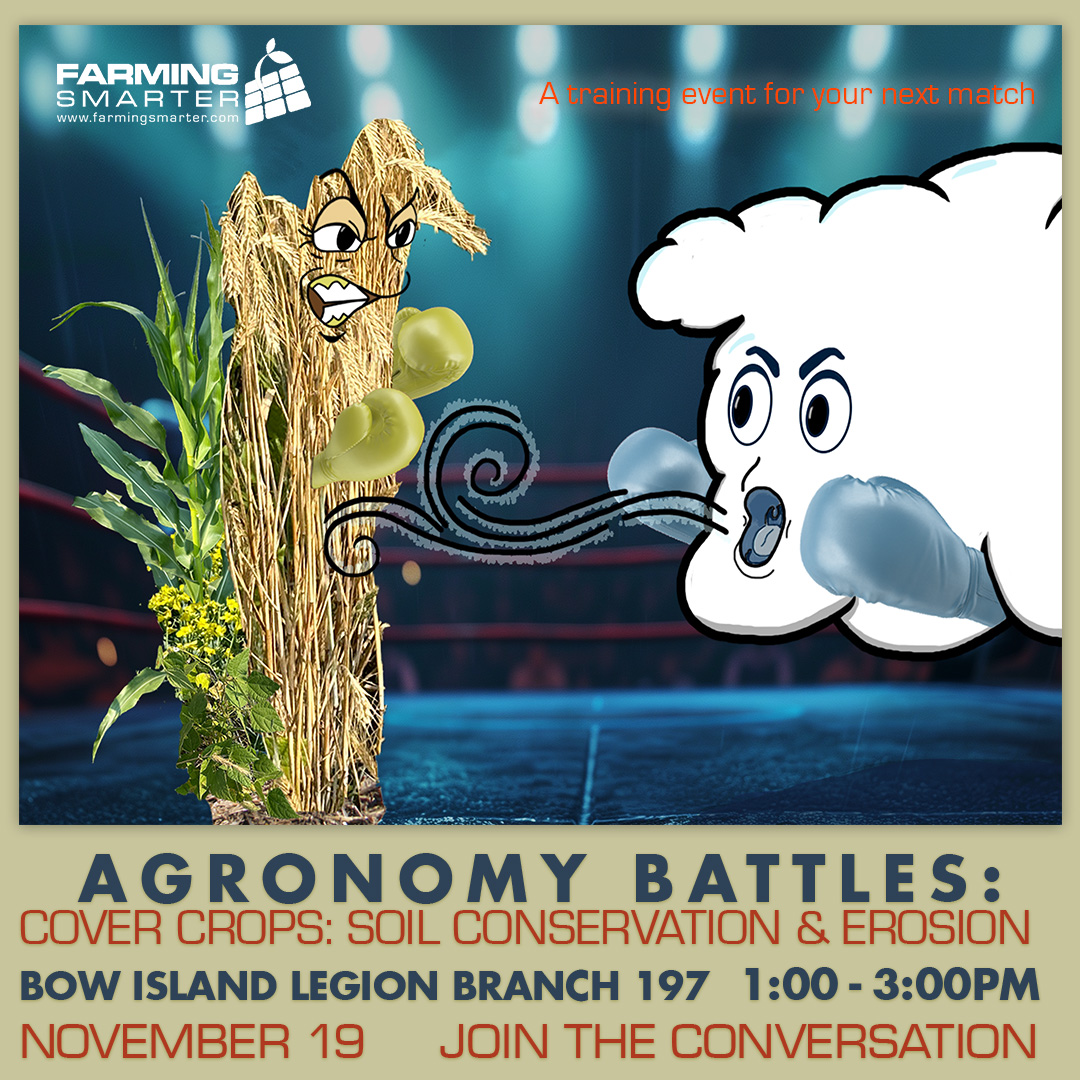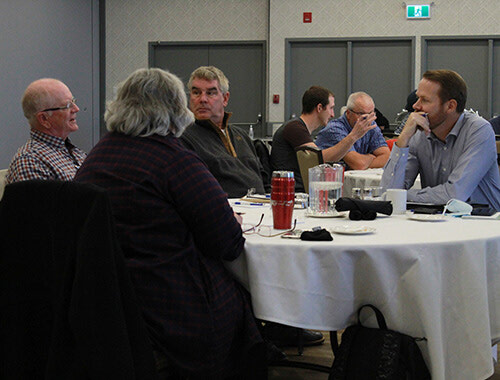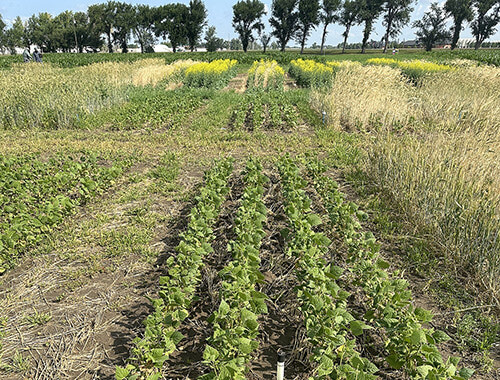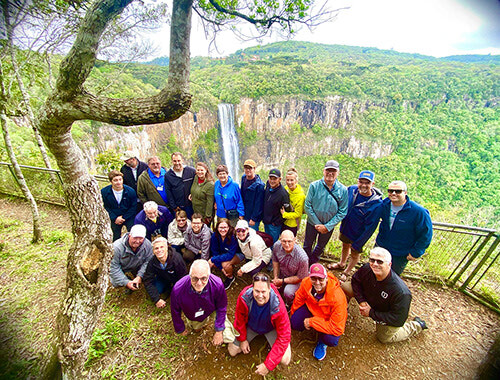By Kristi Cox, originally published in the Fall 2024 Farming Smarter magazine.
Southern Alberta has a soil conservation challenge. Lighter soil, dry conditions and high winds add up to a lot of displaced soil if it is unprotected.
Farming Smarter initiated the Saving Soils Program to run a suite of studies to examine how practices such as cover crops may mitigate soil loss while providing additional benefits including a potential added revenue source for producers.
Over the past 20 years, most farmers adopted reduced tillage farming systems. The stubble holds soil in place and captures moisture. Growers harvest specialty crops like potatoes, dry beans and sugar beets late and leave little to no stubble or roots in the ground increasing risk of soil loss.
“The biggest limitation to establish cover crops is the waning heat and sunlight as days get shorter in the fall,” said Farming Smarter Field-Tested Manager Lewis Baarda. Farming Smarter wants to generate viable solutions.
“We wanted to put together a suite of projects that would help us develop practices and tools that farmers could use in a way that fits their system, that is economical, and that can protect their soil from erosion,” said Baarda. “We put together about a dozen different trials to look at what farmers can do to protect that soil from being blown away.”
Financial support from the Weston Family Foundation and RBC Tech for Nature enabled the dynamic and broad scope to the study.
“Both those groups supported our initiative and gave us a fair bit of flexibility and adaptability within the project,” said Baarda. “We're pushing the limits and testing things we weren't sure would work, taking risks to see what’s possible. It's nice to be able to try something, reevaluate and adjust for the next year.”
|
|
|
Spring-seeded cover crops begin to establish between rows of sugar beets. Farming Smarter is exploring this strategy as an effective way for both sugar beet and potato growers to adopt cover crops in their field. |
The studies:
Potatoes & Sugar Beets
Potato and sugar beets crops leave little time to establish a cover crop after a late harvest.
“If you've got a long, hot autumn, plenty of different crops will grow,” said Baarda “But not every year will be like 2023. Sometimes we get frost in the middle of September and things cool off enough that nothing grows.”
One approach to solving this challenge is to try different application methods including broadcasting seeds on growing potato plants so they germinate before the potato harvest. For sugar beets, they tried seeding between the rows in spring, to establish the plants before the beet harvest.
“On-farm research is where we get to work with farmers to fine tune something that they've been thinking about,” said Baarda. “It’s that open, real-world environment where you get to figure out some of the pieces you might not have thought about – some of the economics, or the right equipment. You run into challenges you might not in a small plot and find the practical limitations of some of the things you're trying.”
Small plot trials
Three small plot trials test options for cover crops: Roller crimping, living mulch and camelina.
Roller Crimping:This study looks at the use of roller crimping vs herbicide application to terminate cover crops. Initially, the project used fall rye and winter oats for cover crops, but winter oats proved quickly to have low survivability, so winter wheat replaced it in the trial. To assess efficacy of the methods, they measure soil nutrients, yield of the main crop, soil moisture and weed density. “This looks at how the whole system works,” said Mike Gretzinger, Farming Smarter Research Coordinator. “How does roller crimping potentially benefit things further down the road? Hopefully, we'll be able to answer some of those questions for this project.” |
|
Living Mulch:In this study, rather than roller crimping in the spring, the fall crop becomes living mulch. At spring planting, they strip till between the rows of the fall cover. Again, fall rye and winter wheat served as cover crops. Treatments included low and high seeding density of the cover crop and following with corn, canola or dry beans. The project compared this with conventional herbicide treatment and no cover crop. |
|
Camelina:
Camelina provides a new opportunity for a fall seeded cash crop. Its oil profile is good for biodiesel and is a good source of omega 3.
“It's an emerging market, so there's the challenge of getting the value chain set up,” said Gretzinger. “In previous work, we found that fall seeding is a terrific option for Canada. You get fall cover, and the camelina itself could be a cash crop.”
Treatments in this small plot study include varied seeding rates, planting depths and planting dates. Results examined include plant density, yield, days to flower, emergence and weed density.
Results:
The goal is to develop practical, economical solutions that can help protect the valuable soil resources in southern Alberta. Overall, the project is in an exploratory phase. The funding support from Weston Family Foundation and RBC Tech for Nature enables Farming Smarter to try different ideas and learn from the results.
“Farmers are just as interested as anybody else in making sure they protect that valuable soil resource,” said Baarda. “The support of a group like Farming Smarter helps them fine tune it and figure out what works and what doesn't. Using science, research, and all the tools at our disposal, we can get them close to practical solutions. We have six inches of soil here in southern Alberta. Once it's gone, it's gone. It takes years and years to put it back together. I think it's in everybody's interest to find practical ways that don't compromise production yield, but also provide that benefit of preventing soil from blowing.”
Whether you’re a grower facing challenges, or someone who wants to share what they’ve been trying, if you want to discuss solutions to soil erosion, Baarda and Gretzinger would like to talk with you.
“I'd love to talk to anybody about what they've been trying,” said Baarda. “What's worked, what hasn't, and how we can potentially incorporate their ideas into some of our research, or perhaps incorporate some of our ideas into their farm.”
Find contact information for Lewis and Mike in the staff directory on farmingsmarter.com
Connect with Lewis & Mike about the projects!
|
|
|
Subscribers can learn more about cover crops, including how other local farmers are adopting this great practice, at the upcoming Agronomy Battles! This exclusive round-table event opens the floor for you to ask questions or share what you've learned with other dynamic, innovative pros. |

